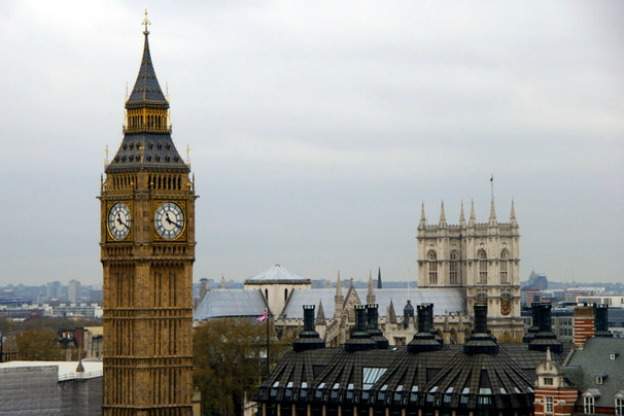
Time capsule for this episode: 1500
St. Paul's Cathedral
At the top of Ludgate Hill sits St. Paul's Cathedral. For three hundred years, the cathedral's famous dome has stood out against London's skyline, towering over all. Today, it remains one of the highest domes in the world. The site’s original church, dedicated to St. Paul, dates back to 604 AD. The modern-day cathedral was constructed in the 17th century, following the Great Fire of London.
Over the centuries, St. Paul's Cathedral has upheld a tradition of excellence in both the performance and composition of sacred music. Among its long list of personnel is John Redford, who served as organist and Master of the Choristers at the cathedral from around 1525 to 1547.
Two more composers listed on the St. Paul Cathedral’s impressive personnel roster are William Mundy and John Blow. They were both recruited for the Chapel Royal and likely rubbed shoulders with other musicians within St. Paul's.
St. James' Palace
Next on our musical tour of London is St. James's Palace. This Tudor palace is situated along Pall Mall, a major street in the London borough of Westminster. Henry VIII had it constructed on the site of a former leper hospital dedicated to Saint James the Less. For over 300 years St. James’s housed the queens and kings of England, and it remains the official Royal Court, though Queen Elizabeth II now actually lives (and receives guests) at Buckingham Palace.
The Chapel Royal at St. James's has a long and illustrious history. Thomas Tallis served there from 1543 until his death in 1585. Tallis witnessed the reign of the Tudor Dynasty through Henry, Edward, Mary, and Elizabeth. He and fellow composer William Byrd, weathered all tensions that arose from the era's political and religious shifts.
Orlando Gibbons served the Chapel Royal from 1615 till his death in 1625. A prolific and versatile composer, Gibbons produced a generous number of compositions for keyboard, viol, and voice.
Westminster Abbey
In the heart of London, situated next to Big Ben and the House of Parliament, is Westminster Abbey. A centuries-old legend says that the abbey was founded as early as the seventh century near a site where a fisherman had a vision of Saint Peter. A tradition of offering fish as gifts to the abbey continues today. Construction of the church began in 1245 during the reign of Henry III, who intended the church as a shrine for Saint Edward the Confessor and is also the site of his own tomb.
Robert White, hailed by Thomas Morley as one of England's greatest composers, rose in the ranks to become organist and Master of the Choristers at Westminster Abbey in 1570.
Henry Purcell became an organist at the abbey in 1669. There, he composed sacred music and odes for numerous ceremonial occasions. Compositions by George Frideric Handel also adorned the ceremonies at Westminster. Handel was commissioned to compose four anthems for the coronation of George II in 1727. The composer was buried at Westminster Abbey. It was reported that over three thousand were present at his funeral service.
Featured recording: I Dilettosi Fiori
Our featured release showcases recorder player and keyboardist Corina Marti in her solo debut recording. I Dilettosi Fiori contains a mixture of instrumental dances, variations, and arrangements of vocal works, performed on the recorder, the double recorder, and the clavisimbalum, one of the earliest known quilled instruments.
Most of the pieces are found in the Faenza Codex, a late-fifteenth-century collection of French and Italian vocal works arranged for keyboard. Typically, one of the lower voices is preserved in the left hand part, while an upper voice is preserved in the right hand part. The later is ornamented with divisions and intricate cadential formulae.
In addition to pieces from the Faenza Codex, the CD contains monophonic dances from around the same time period. The dances are collected among the vast Additional Manuscript series at London's British Library. Each dance, or estampie, is formidable in length and helps reveal the height of virtuosity attained among instrumentalists during the fourteenth and fifteenth centuries.









